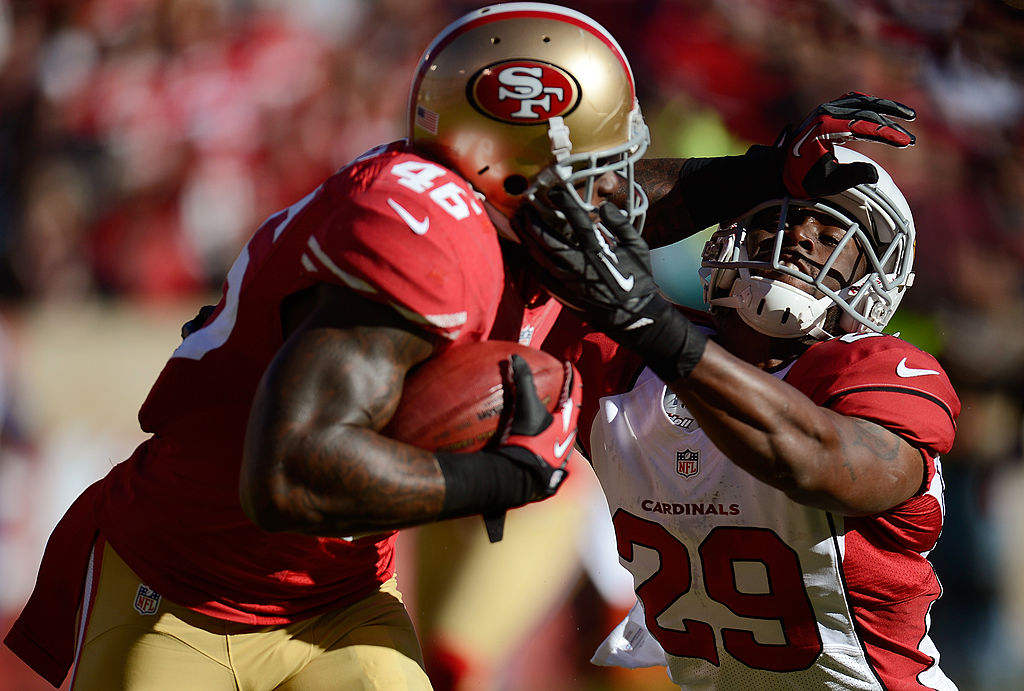NFL
A Former San Francisco 49er Reveals How NFL Players Really Feel About the Super Bowl Halftime Show

Everyone has a favorite part of the Super Bowl. Sports fans, especially SSan Francisco 49ers and Kansas City Chiefs supporters, obviously love the game itself; others tune in to see the wonderful, wacky, or downright weird commercials. Then, of course, there’s the halftime show, which is a marquee event in its own right. Things are a bit different for NFL players, though.
While the halftime show is a major part of every fan’s evening, players taking part in the Super Bowl have a different experience. How do they feel about the performance that’s interrupting their chance at football glory?
The evolution of the Super Bowl halftime show
In the NFL’s earliest days, the league didn’t even have a championship game. While that eventually changed—the 1932 season ended in a tie, which required a playoff and the tradition stuck—things were still quite different than today’s Super Bowl.
In 1967, the NFL’s Green Bay Packers and the AFL’s Kansas City Chiefs met in what would eventually be called Super Bowl I. Due to a television blackout, the game was unwatchable within 75 miles of Los Angeles; in the stadium, roughly one-third of the seats were unsold. The halftime entertainment consisted of college marching bands, a trumpeter, “300 pigeons, 10,000 balloons and a flying demonstration by the hydrogen-peroxide-propelled Bell Rocket Air Men.”
Other early halftime shows were equally bizarre. In 1989, for example, “Be Bop Bamboozled” featured 3-D effects and an Elvis impersonation magician—fittingly called Elvis Presto—performing the world’s largest card trick.
In the 1990s, however, the worm started to turn. New Kids on the Block performed in 1991, and Michael Jackson appeared two years later. Once the King of Pop joined the parting, each subsequent halftime show featured more and more star power.
What do NFL players normally do during halftime?
On an ordinary NFL Sunday, halftime is a whirlwind of activity. Each team has 12 minutes, which includes walking on and the field, to make any adjustments needed for the second half.
Once the team makes it back to the locker room, the players and coaches go their separate ways. The athletes generally focus on more immediate concerns, like going to the bathroom, grabbing a drink, or getting some running repairs from a trainer; the coaching staff will duck into their own room to start planning for the second half.
After some breakneck analysis, the coaching staff emerges to brief the players; each coach will generally brief his or her own unit on a few key points for the second half. The head coach then provides a final rallying cry and, before you know it, it’s time to head back out to the field.
Do players care about the Super Bowl halftime show?
As you might assume, most NFL players have more important things to focus on during halftime than the on-field entertainment. Between in-game adjustments and staying warm during the longer break, most athletes aren’t interested in watching a show.
“When you’re playing you don’t really care who is performing the halftime show because they’re taking a longer time and we tend to get cold sitting in the locker room for thirty minutes even though you’re trying to stay hungry,” Delanie Walker, a veteran tight end who made it to the Super Bowl with the San Francisco 49ers in 2012, explained on Quora. “So we don’t focus on who’s singing, because we’re trying to stay warm, people are eating, etc.”
When he’s at home, though, Walker is as much of a fan as anyone else.
“If I’m not playing, I do care,” he continued. “They’re putting on a show, and I’m going to be sitting there, so I want to have a good time at halftime if I’m not playing.











